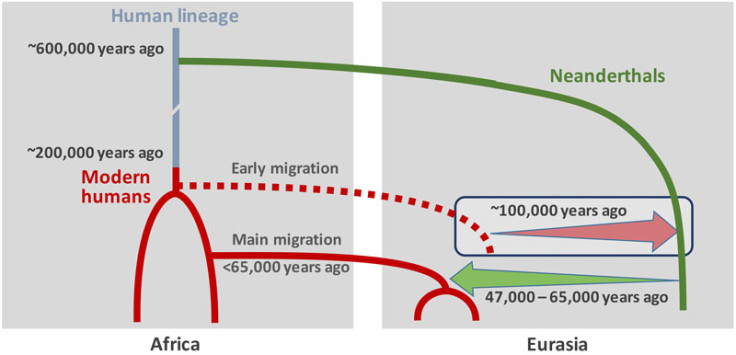Siberian Neanderthals were having sex with modern humans 35,000 years earlier than thought

Neanderthals interbred with modern humans at least 35,000 years earlier than previously thought, scientists have revealed. Researchers found evidence Siberian Neanderthals had met and mated with modern humans, with the latter contributing genes to Neanderthal DNA 100,000 years ago.
An international team of scientists analysed the genome of a Neanderthal and a Denisovan found in the Altai Mountains, two modern-day humans and Neanderthals found in Spain and Croatia. Publishing their findings in the journal Nature, they discovered that the Siberian Neanderthal had some modern human DNA, despite having lived long before these two species were known to have met and interbred.

It has long been known Neanderthals and modern humans interbred around 50,000 years ago despite diverging into two species some 430,000 years ago. Evidence suggests this interspecies sex took place between 47,000 and 65,000 years ago.
We know Neanderthal DNA was passed on to modern humans, as it is still found in our genome today. Indeed, studies are now showing to what extent Neanderthal genes influence us – from nicotine addiction to allergies. However, genes being passed the other way, i.e. from modern humans to Neanderthals had not previously been seen.
"We knew from Neanderthal DNA found in the genomes of humans outside Africa that Neanderthals and humans have interbred. This interbreeding is estimated to have happened less than 65,000 years ago, around the time that modern human populations spread across Eurasia from Africa. We now find evidence for a modern human contribution to the Neanderthal genome. This is likely the result of much earlier interbreeding", says study co-leader Sergi Castellano from the Max Planck Institute for Evolutionary Anthropology.

Researchers found that while the Siberian Neanderthal had some modern human DNA, those from Spain and Croatia did not. This has led researchers to believe a group of modern humans ventured out of Africa far earlier than we thought, on what turned out to be a failed migration attempt. The human species involved ultimately became extinct.
This group of modern humans appear to have diverged from those that successfully left Africa much later around 200,000 years ago. Researchers believe this population came across the Siberian Neanderthals somewhere in the Levant, where Neanderthals are thought to have arrived about 120,000 years ago.
Antonio Rosas, one of the study authors, said: "Over 100,000 years ago, anatomically modern humans ventured out of Africa for the first time. These modern humans met and interbred with a group of Neanderthals, which later may have moved to the south of modern day Siberia, carrying the genes of H. sapiens." He said the find has "direct implications on the evolutionary model" in terms of early human migration.
© Copyright IBTimes 2025. All rights reserved.






















